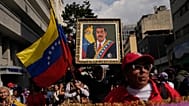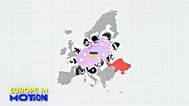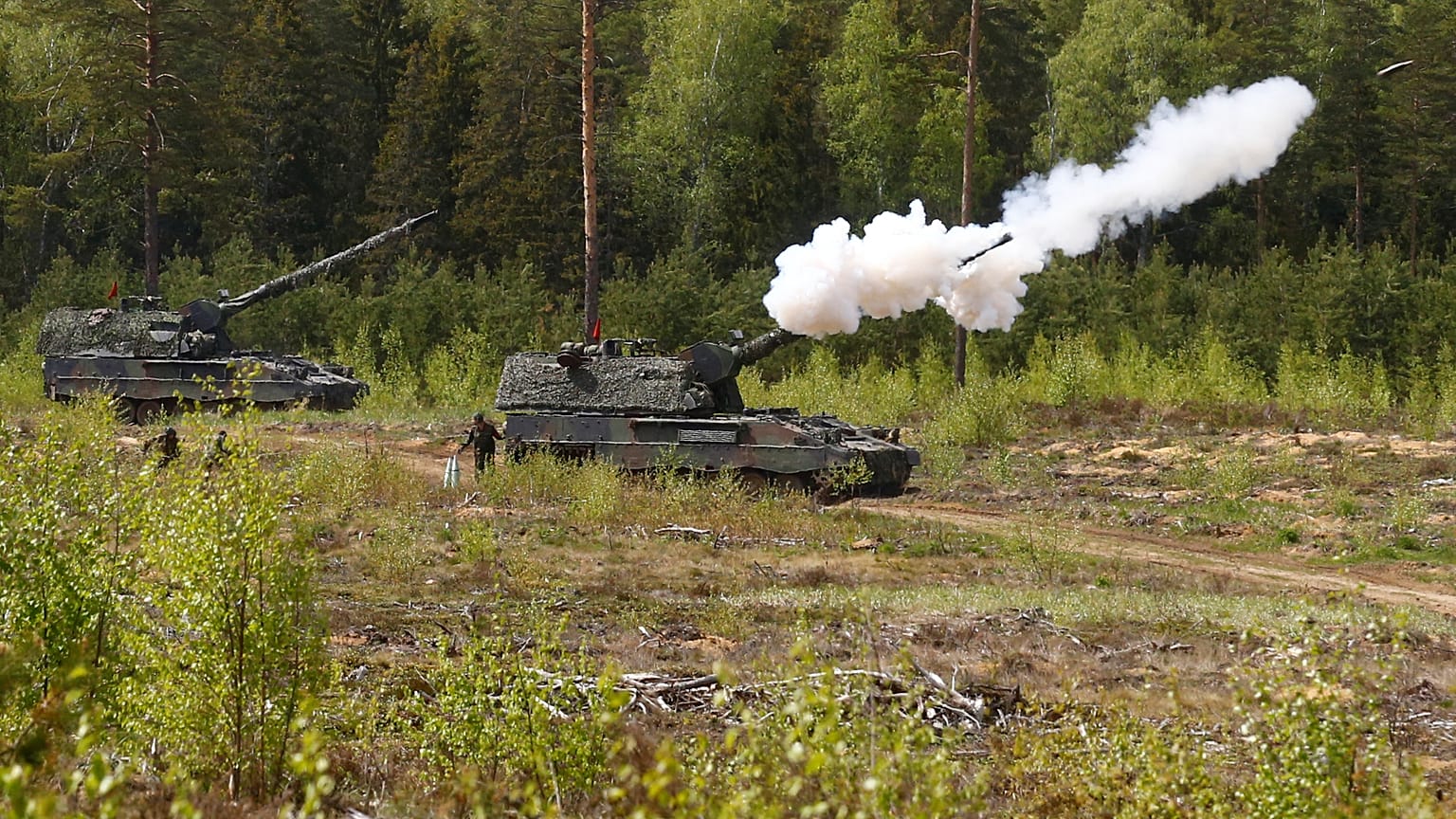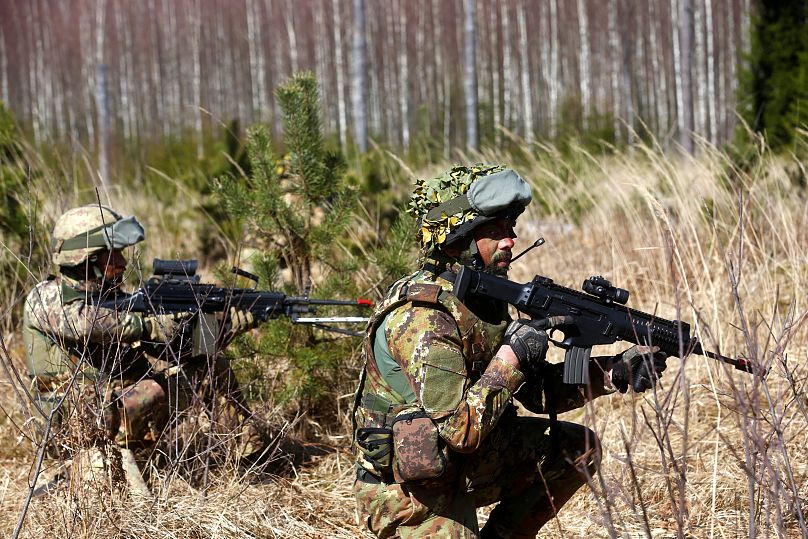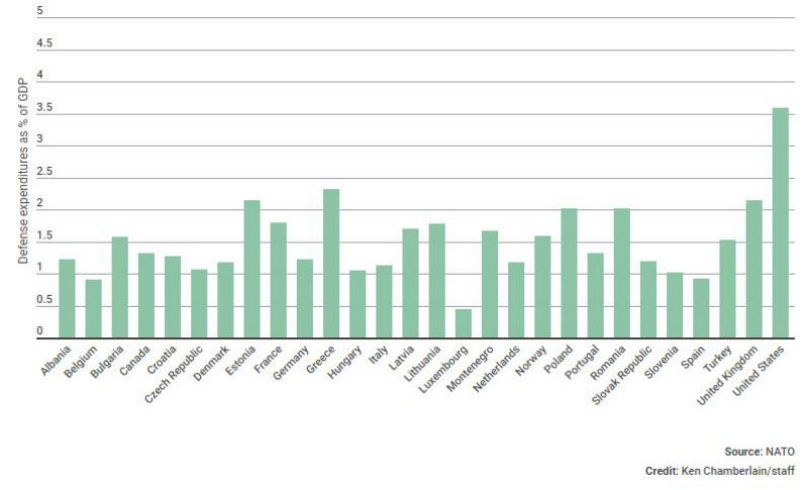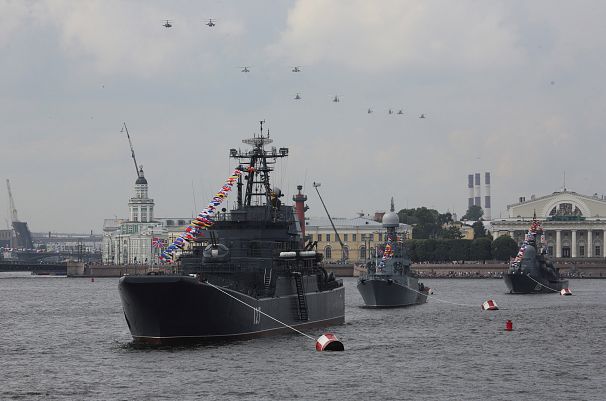Figures from NATO and the research institute SIPRI show Russia spent less on defence spending in 2017, while NATO expenditure rose for the third consecutive year.
Military spending in NATO countries continues to dwarf equivalent spending in Russia and the gap widened in 2017, according to the latest report by the Stockholm International Peace Research Institute (SIPRI).
Data provided by the organisation which studies conflict, weapons and arms control found that Russia slipped from third to fourth place in the table of states with the highest military expenditure. Moscow spent $66.3 billion in 2017, nearly three billion dollars less than the previous year.
Relative to the country’s economy, this represented a fall of a full percentage point: Russia spent 4.3% of its Gross Domestic Product (GDP) last year, compared to 5.3% in 2016.
In contrast, the United States spent nearly ten times as much: its reported figure of $610 billion is in line with US expenditure over the past few years.
Total military spending by all 29 NATO countries was $900 billion in 2017, accounting for 52% of world spending according to SIPRI.
Europe playing catch-up
In March NATO reported three consecutive years of increased defence spending among countries in the North Atlantic alliance “for the first time in many years”, after a significant period where expenditure had fallen.
SIPRI found that military expenditure in Central Europe rose by 12% in 2017, “driven by the perceived threat from Russia felt in many countries”. This meant military spending had risen for four consecutive years, after six years in a row which had seen decreases.
“European states are increasingly conscious that the world is a dangerous place,” said the International Institute for Strategic Studies (IISS) in its Military Balance report for 2018. “Our figures indicate that in 2017, Europe was the fastest-growing region when it came to real-terms defence spending,” it added, reporting annual growth of 3.6% last year.
US President Donald Trump has castigated Western allies, notably in Europe, for failing to pay their share of the common security bill.
NATO members pledged to spend at least two percent of their GDP on defence by 2024 – but despite the recent increases, last year in Europe only Estonia, Greece and the UK met that target.
They are playing catch-up from a low base: SIPRI found that over the period from 2008-2012, 20 of 37 Western and Central European countries reduced military spending by over 10% in real terms.
NATO member contributions 2017 (as % of GDP)
Russia’s economy bites
Last year marked the moment when the poor state of the Russian economy finally hit the military. Although falling oil export revenues had led to a lower government expenditure, “military spending kept increasing until 2017, when it fell for the first time since 1998,” says SIPRI. Last year’s amount brought “a real-terms decrease of 20% compared with 2016”.
However, its share of GDP (4.3%) “was still higher than any other European country had recorded since 2011”.
The latest figures mark a reverse in Russian spending after a long period of expansion during the Putin era. Over the ten years from 2003-2013, military spending reportedly doubled – increasing on average by six percent a year through the 2000s.
Non-military weapons
However, military spending is only part of a wider picture. “Russia is, importantly, demonstrating continued interest in capabilities beyond conventional military force that are easier to develop and deploy unaccountably,” says the IISS report, warning that the West has found no effective response either via sanctions or other measures.
The institute singles out three things to watch for: "attempts to leverage financial power, in particular in purchasing controlling shares of infrastructure; propaganda targeted steadily and effectively at Russian-speaking minorities and pro-Russian political parties; and the assertion of cyber power through interference in democratic processes”.



